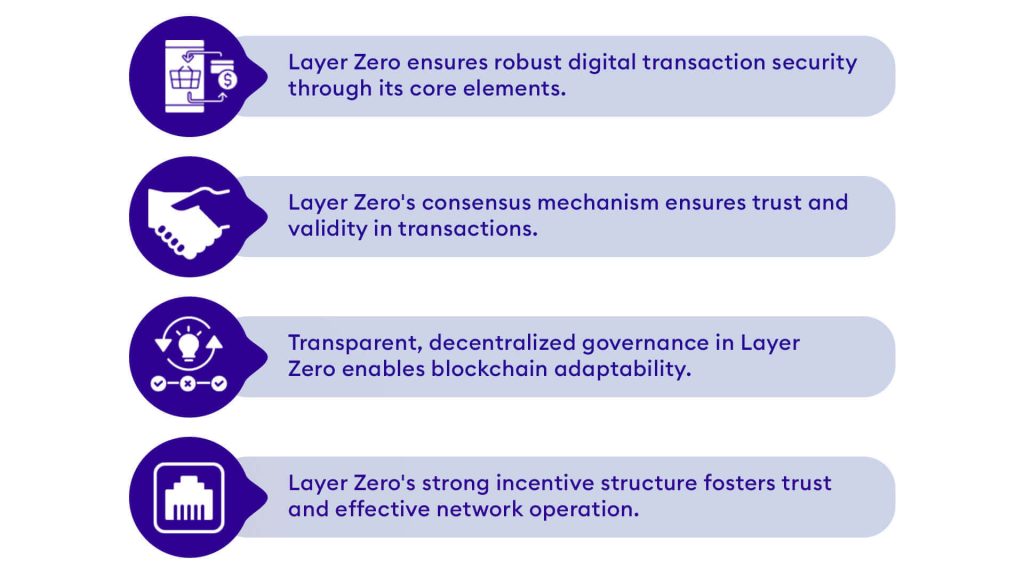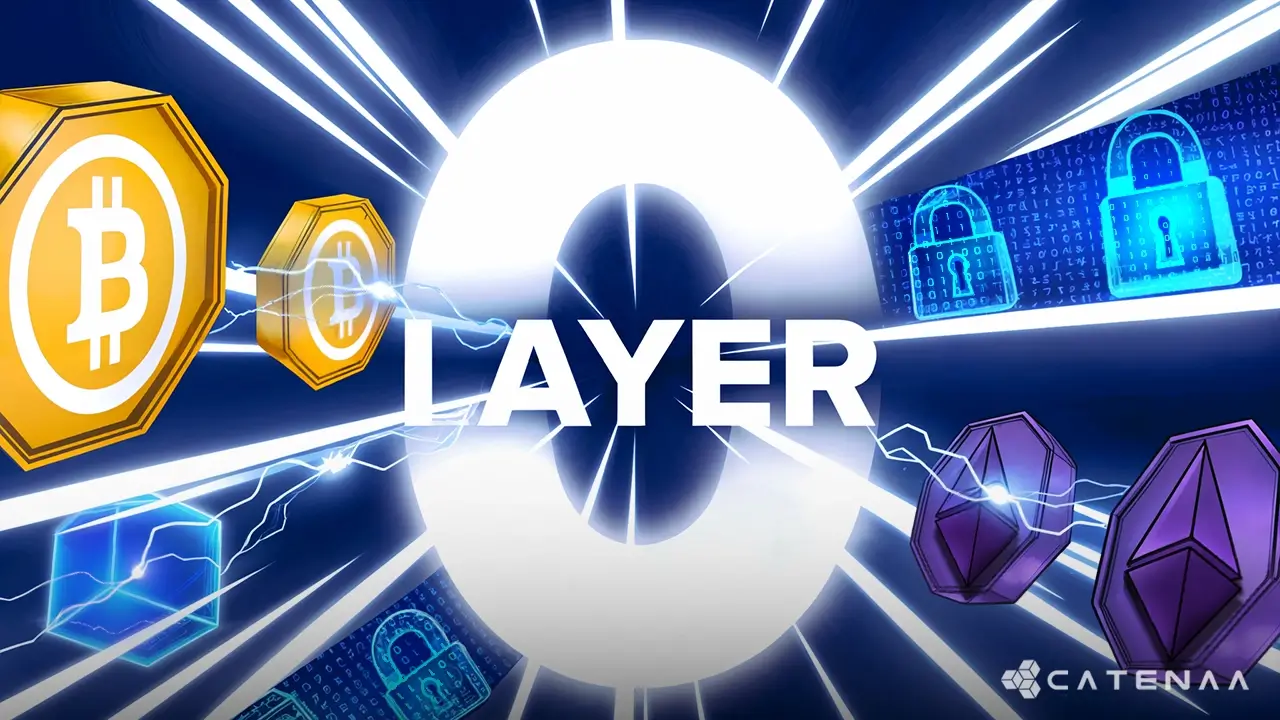Blockchains are a revolutionary technology that creates a new era of secure digital transactions. The blockchain is composed of multiple layers, each responsible for different aspects of the blockchain. Layer zero is the foundation layer responsible for the core functionalities of the blockchain. It is responsible for the consensus mechanism, governance, and incentive structure. Uncovering the layers of blockchain is crucial for understanding how the technology works. This article will explore the role of layer zero in the blockchain and how it works to secure digital transactions. Layer zero is the foundation of the blockchain, and its importance should not be overlooked. We will look at how layer zero is used to secure digital transactions, how it provides consensus and governance, and how its incentive structure works. By understanding the role of layer zero, we can gain a better understanding of the entire blockchain and the technology behind it.
What is Layer Zero of Blockchain?
Layer zero of the blockchain is the foundational layer responsible for the core functionalities of the blockchain. This layer contains the consensus mechanism, governance, and incentive structure. In layer zero, we find the blockchain’s core functionalities. The layering of the blockchain is important to note, as each layer has specific responsibilities and functionalities. Layer zero is the foundation of the blockchain, and its importance should not be overlooked. It is the core layer responsible for securing digital transactions, creating consensus, and governing the blockchain. 1

How this feature Secures Digital Transactions
Layer zero secures digital transactions through a consensus mechanism, smart contract functionality, and a tokenomics model. With a consensus mechanism, a blockchain network can achieve agreement on any new information added to the network. This is decentralized and can be achieved through a majority consensus or a more challenging Byzantine Fault Tolerant consensus. With smart contracts, decentralized, self-executing clauses can be added to any transaction. The data is secure and immutable, making it a highly secure way to capture and store data. With tokenomics, the governance aspect plays a significant role. Tokens can be designed to serve different functions, such as service or equity tokens. Service tokens are designed to provide access to a service, while equity tokens are designed to represent ownership of an asset. These different functions and features are achieved through tokenomics. 1
Layer Zero Consensus Mechanism
The consensus mechanism is how nodes of a distributed network reach an agreement about the state of transactions and data. This can be achieved through different methods such as proof-of-work, proof-of-stake, etc. With proof-of-work, nodes compete to solve a complicated mathematical problem, and the reward for solving that problem determines the number of new bitcoins generated. With proof-of-stake, nodes are selected to validate transactions based on their stake or economic interest in the network. Layer zero’s consensus mechanism is responsible for creating a secure network where all nodes agree on the transaction data and its legitimacy. In a blockchain, a consensus mechanism is needed to validate transactions and create trust in the network. A network cannot be decentralized if it requires trust between the parties involved. Therefore, a consensus mechanism is needed to ensure the trust between the parties is valid and reliable.
Layer Zero Governance
Governance refers to the process of making decisions and implementing changes within a blockchain system. It is essential that the governance is decentralized, autonomous, and transparent. The governance model will affect how changes are enacted, and governance is managed. A blockchain can be governed through a representative democracy, direct democracy, or a decentralized autonomous organization. Each governance model has its pros and cons, and the model will impact how the blockchain is managed. The governance model within layer zero is responsible for implementing changes and managing the blockchain. A blockchain is a constantly evolving technology and will be improved over time. This means the blockchain needs a way to make changes and remain flexible enough to cater to the needs of the network. By having a transparent, decentralized governance model, the blockchain will be able to cater to the needs of the network.
The Incentive Structure
An incentive structure is implemented to incentivize the desired behavior within the blockchain network. The incentive structure acts as a reward for nodes operating within the network and validating transactions. This can be done through various methods, including tokens, reputation, or a combination of the two. A token is an electronic token with value and can be used within a network. These tokens are used as a reward for validating transactions and securing the network. Tokens can also be used as a payment method for goods or services. Reputation is a score that is given to nodes that are operating within the network. A higher reputation score means more trust is given to the node. This is essential because it measures how much the network trusts that node to act in its best interest. An effective incentive structure will be created by having a strong and secure layer zero. A strong and secure layer zero will generate high trust and confidence within the network.
The Benefits
Layer zero’s benefits to the blockchain are vast. Layer zero provides the framework for securing digital transactions, creating a consensus, and governing the blockchain. It also acts as the foundation and core of the blockchain. Layer zero is responsible for creating an incentive structure and tokenomics model that will provide value to the network. When layer zero is fully optimized, the blockchain can reach its full potential and be a secure and reliable network. The benefits that layer zero brings to the blockchain are essential. Layer zero provides the framework for securing digital transactions, creating a consensus, and governing the blockchain. 2
Conclusion
The foundational layer of a blockchain is responsible for its core functionalities, including the consensus mechanism, governance, and incentive structure. This layer ensures the system remains adaptable, allowing improvements over time to meet network demands. A fully optimized foundation enables the blockchain to reach its full potential.
Beyond serving as the base for the entire system, this layer also has practical applications. Protocols at this level can support decentralized applications (dApps) for supply chain management, voting systems, and peer-to-peer marketplaces.
A strong foundation is crucial for the efficient operation of the entire blockchain. Without it, the upper layers would struggle to function effectively. Understanding its significance is essential for anyone interested in blockchain technology.
- AnalyticsInsight: https://www.analyticsinsight.net/layer-0-blockchains-breaking-down-their-key-features[↩][↩]
- Cronj: https://www.cronj.com/blog/layer-0-blockchain-advantages-use-cases-and-future-prospects[↩]


